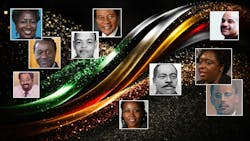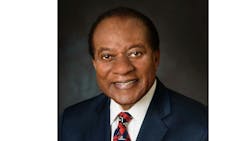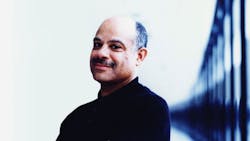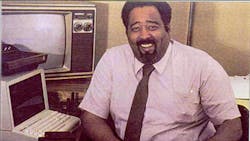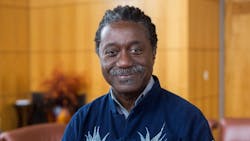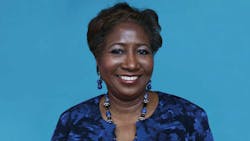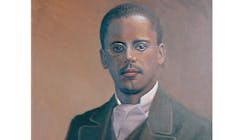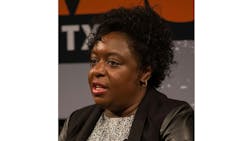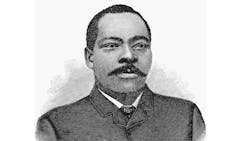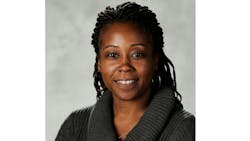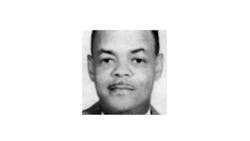Electronics Engineers Take Center Stage for Black History Month
What you’ll learn:
- Insight into notable African-American electronics engineers.
- What tech they invented, developed, or improved.
- What their lasting legacies will mean for the future.
From the early days of resistors and communications technology to video-game consoles to pacemaker technology, African-American electronics engineers have made groundbreaking contributions that shape the technological world we live in today. Despite facing barriers and challenges, these innovators pushed the boundaries in fields that range from robotics to guidance systems, revolutionizing many industries and inspiring future generations. Below are just a few of the exceptional electronics engineers and their lasting impacts on the world around us.
Victor B. Lawrence
Victor Lawrence, a Ghanaian-American engineer, is known for his contributions to digital signal processing for multimedia communications. His projects significantly improved or enhanced every phase in the evolution of early low-speed and today's high-speed data communications.
Lawrence joined AT&T in the early 1970s, where he would serve in multiple roles during his 30+ years at the telecom company, including Supervisor in the Data Communications Equipment Laboratory, Department head of Data Communication Research, Director of Advanced Multimedia Communications, and Vice President of Advanced Communications Technology.
During that time, Lawrence’s contributions improved digital filter designs, which utilized his bias-less rounding arithmetic, a technique used in digital-signal-processing chips to suppress oscillations and stabilize filters. He also served as lead engineer for AT&T's first 2,400-bit/s full-duplex modem for the public switched telephone network (PSTN) and led the development of the first PCMCIA-based V.32bis and wireless data modems.
Lawrence’s work included high-speed transceivers for the local loop and for premises applications that led to the development of a variety of digital subscriber loop (DSL) technologies. He also had a hand in developing asynchronous-transfer-mode (ATM) switching chipset (ATLANTA), which was leveraged by companies that still use the technology today.
Throughout his career, Lawrence was involved in the development of the high-definition television\(HDTV) video encoder; had his team do the systems engineering work for Sirius Radio; pioneered bringing fiber-optic communications to Africa; and developed the U.S. government’s Future Secure Voice System (FSVS) terminal as well as the initial testing over the continental U.S. secure network.
Mark Dean
Mark Dean is known for his work with computers, most notably the development of the ISA bus, a 16-bit internal bus of IBM PC/AT and similar computers based on the Intel 80286 during the 1980s. He also led a design team to create the world’s first 1-GHz microchip, a feat that was accomplished in 1999.
Dean’s electronic engineering work led to the development of the first color PC monitor in 1984, and his contributions to the PC world garnered him more than 20 patents over his career. These include patents for composite video color signal generation, a data-processing system that utilizes a co-processor to handle logic errors, microprocessor hold-and-lock circuitry, adapters for monochrome and color graphics, and much more.
Jerry Lawson
Jerry (Gerald) Lawson is known as the “father of modern gaming,” a testament to his lifetime career in developing the gaming technology we still use today. His Fairchild Channel F video game console, developed from Wallace Kirschner and Lawrence Haskel’s prototype, was the first system to take advantage of ROM cartridges. This would allow users to buy a library of games, providing a new revenue stream for console manufacturers through game sales.
Lawson was a member of the Homebrew Computer Club, a group of early PC hobbyists that included Steve Jobs and Steve Wozniak. By 1980, Lawson moved on from Fairchild and established Videosoft, a video-game development venture that made software for the Atari 2600 in the early 1980s. The company closed about five years later without releasing a single title, leading Lawson to become a consultant. At one point, he worked with Stevie Wonder to produce a "Wonder Clock,” a device that would wake a child with the sound of a parent's voice; however, it never went into production.
Herbert Winful
Herbert Winful is known for his contributions in many areas, including nonlinear fiber optics, nonlinear optics in periodic structures, the nonlinear dynamics of laser arrays, the propagation of single-cycle pulses, and the physics of quantum tunneling, among a host of others. Winful earned his electrical engineering PhD at the University of Southern California in 1981 and became a Principal Member of Technical Staff at GTE Laboratories in Waltham, Mass., where he conducted research in fiber optics and semiconductor laser physics.
Winful made advances in many areas of photonics and quantum electronics beyond those mentioned above. These include polarization instabilities and distributed-feedback fiber Raman lasers, which help mitigate instabilities in fiber optics and laser systems.
Throughout his career, Winful published more than 130 journal articles, supervised the research of many PhD students, and was the recipient of many awards and honors, including the 2020 IEEE Photonics Society Quantum Electronics Award for “pioneering the field of nonlinear optical periodic structures and for foundational contributions to nonlinear dynamics of semiconductor laser arrays.”
Sandra K. Johnson
Sandra K. Johnson is known for being the first African-American woman to earn a doctorate in electrical engineering at Rice University and the first black woman to enter the IBM Academy of Technology. After gaining her doctorate, Johnson went to work for IBM Research, where she developed parallel and shared memory systems, parallel I/O, networked computing, and the Vesta Parallel File System. She also had a hand in developing Deep Blue, the AI-powered chess computer.
In 2001, Johnson shifted from her research work to head IBM’s web-database integration team at the company’s Silicon Valley Lab, where she worked until 2011 before becoming a business development executive and later Chief Technology Officer of IBM Central, East and West Africa (based in Nairobi).
Over the course of her distinguished career, Johnson earned myriad technical and professional awards and has over 40 patents issued and pending. She’s also an accomplished author and wrote and co-authored over 80 publications, most notably being the Editor-in-Chief of the book Performance Tuning for Linux Servers.
Lewis Howard Latimer
Lewis Howard Latimer is known for inventing the evaporated air conditioner (swamp cooler), improving the process of manufacturing carbon filaments for electric light bulbs, and improving sanitation systems for railroad cars. Latimer, the son of slaves, began his career as an office boy for the patent law firm Crosby Halstead and Gould, where he learned to use a set square, ruler, and other drafting tools. After noticing his patent drawing skills, his boss would later promote Latimer to head draftsman, where he would earn the equivalent of $440 per week in 1872.
By 1874, Latimer patented the “Water Closet for Railroad Cars” with co-author Charles M. Brown. A few years later, in 1876, Alexander Graham Bell hired him to draft the necessary drawings needed to receive a patent for Bell's telephone.
Two years after that, Latimer gained employment as an assistant manager and draftsman for the US Electric Lighting Co., a rival company of Thomas Edison. While there, he invented a modification to the creation of carbon filaments that were less prone to breakages during the carbonization process. The modification process entailed placing filament blanks inside a cardboard envelope during carbonization.
Latimer would eventually get hired by Edison to refine the light-bulb manufacturing process, but was also employed to gather information from German and French technology advances and then translate that information into English.
Kimberly Bryant
Kimberly Bryant nearly became a civil engineer when she was awarded a scholarship to Vanderbilt University in 1985. However, after being enticed by technologies such as the microchip, personal computers, and portable cellphones, she dropped that major in favor of electrical engineering. It would prove to be the better career choice after working at Westinghouse Electric and DuPont, but Bryant would eventually leave those renowned companies in favor of working for biotechnology and pharmaceutical companies, such as Pfizer, Merck, Genentech, and Novartis.
While Bryant made great strides at these tech and pharma industries, her daughter inspired her to found Black Girls Code, after gaining interest in learning how to program. During that time, Bryant was unable to find STEM academics that could accommodate her daughter's needs, as most institutions in the San Francisco Bay area in 2011 were slotted with mostly male students.
As the name implies, Black Girls Code teaches computer programming to school-age girls in after-school and summer programs. The nonprofit has a goal of teaching one million black girls to code by 2040, and the organization already has trained 3,000 girls in 15 chapters in cities across the United States and around the globe, including a chapter in Johannesburg, South Africa.
Granville Woods
Granville Woods holds the title of the first African-American to become a mechanical and electrical engineer after the Civil War. Woods was a self-taught engineer, with most of his work encompassing trains and street cars. He began his career in 1872 as a fireman on the Danville and Southern Railroad in Missouri, where he would eventually become an engineer. By 1878, Woods would gain employment on the steamer "Ironsides" and became its chief engineer two years later.
In 1880, Woods established his own business, the Woods Electric Co., as an electrical engineer and an inventor, where he would receive a multiplex telegraph patent. Over the course of his career, Woods obtained more than 50 patents, including those for an automatic brake and an egg incubator, as well as for improvements to other technologies such as the safety circuit, telegraph, telephone, and phonograph.
One of his more interesting inventions combined a telephone and telegraph. Known as the “telegraphony,” the device let users talk and text Morse code at the same time over a single wire.
Ayanna Howard
When Ayanna Howard was young, she became interested in aliens and robots, with the Bionic Woman TV show being the catalyst for becoming a roboticist and engineer. Later on in life, she obtained a B.S. in engineering from Brown University in 1993 and her M.S. and Ph.D. in electrical engineering from the University of Southern California in 1994 and 1999, respectively.
She also had an interest in artificial intelligence (AI), which garnered her a senior position at Seattle-based Axcelis Inc. There, she helped develop Evolver, the first commercial genetic algorithm, and Brainsheet, a neural network developed in partnership with Microsoft.
From 1993 to 2005, Howard worked at the NASA Jet Propulsion Laboratory as a senior robotics researcher and a deputy manager in the Office of the Chief Scientist. Her love of all things robotic helped her join Georgia Tech in 2005 as an associate professor and the founder of the HumAnS lab.
Howard currently serves as the dean of the College of Engineering at Ohio State University, but her claim to fame happened in 2008 with the development of the SnoMote robots, which were designed to study the impact of global warming on the Antarctic ice shelves. She also founded Zyrobotics, which offers educational apps and products for children with special needs who have an interest in the STEM fields.
Otis Boykin
Otis Boykin is widely known for his work with electrical resistors, missile guidance systems, and pacemakers, all of which took advantage of his resistor variations. He invented his wire precision resistor in 1959 and two years later developed an improved version that could resist extreme temperature and pressure changes. It was cheaper than comparable resistors at the time and was in high demand from the U.S. military, IBM, and other tech companies during that time.
By 1965, Boykin developed a control unit for pacemakers, allowing for precision regulation, along with small component thick-film resistors used in computers. During the 1960s, Boykin worked as a senior project engineer at the Chicago Telephone Supply Corporation (AKA CTS Labs), where he did most of his pacemaker research.
Later, though, he later sued the company for $5 million, claiming they stole a patent of his and taking credit for a device he developed. The lawsuit was eventually dismissed, and Boykin went on to found his own consultant and research company, with offices in the U.S. and France.
Conclusion
The contributions of these few African-American electronics engineers extend far beyond their inventions, developments, and achievements. Their work has paved the way for advances in robotics, computing, gaming, and more. They transformed how we live our lives and how we can advance society and tackle the unknown challenges yet to come. They are innovators, and their legacies will continue to inspire new generations of electronics engineers, building on their foundations for a better tomorrow.
About the Author
Cabe Atwell
Technology Editor, Electronic Design
Cabe is a Technology Editor for Electronic Design.
Engineer, Machinist, Maker, Writer. A graduate Electrical Engineer actively plying his expertise in the industry and at his company, Gunhead. When not designing/building, he creates a steady torrent of projects and content in the media world. Many of his projects and articles are online at element14 & SolidSmack, industry-focused work at EETimes & EDN, and offbeat articles at Make Magazine. Currently, you can find him hosting webinars and contributing to Electronic Design and Machine Design.
Cabe is an electrical engineer, design consultant and author with 25 years’ experience. His most recent book is “Essential 555 IC: Design, Configure, and Create Clever Circuits”
Cabe writes the Engineering on Friday blog on Electronic Design.
